 Politics
Politics  Politics
Politics  Weird Stuff
Weird Stuff 10 Freaky Times When Famous Body Parts Were Stolen
 Miscellaneous
Miscellaneous 10 Interesting Things Manufacturers Stopped Making and Why
 Gaming
Gaming 10 Funny Tutorials in Games
 History
History 10 Fascinating Little-Known Events in Mexican History
 Facts
Facts 10 Things You May Not Know about the Statue of Liberty
 Movies and TV
Movies and TV 10 Movie Adaptions That Brought Popular Songs to Life
 Health
Health 10 Miraculous Advances Toward Curing Incurable Diseases
 Miscellaneous
Miscellaneous 10 Undeniable Signs That People’s Views of Mushrooms Are Changing
 Animals
Animals 10 Strange Attempts to Smuggle Animals
 Politics
Politics 10 Countries Where Religion and Politics Are Inseparable
 Weird Stuff
Weird Stuff 10 Freaky Times When Famous Body Parts Were Stolen
 Miscellaneous
Miscellaneous 10 Interesting Things Manufacturers Stopped Making and Why
Who's Behind Listverse?

Jamie Frater
Head Editor
Jamie founded Listverse due to an insatiable desire to share fascinating, obscure, and bizarre facts. He has been a guest speaker on numerous national radio and television stations and is a five time published author.
More About Us Gaming
Gaming 10 Funny Tutorials in Games
 History
History 10 Fascinating Little-Known Events in Mexican History
 Facts
Facts 10 Things You May Not Know about the Statue of Liberty
 Movies and TV
Movies and TV 10 Movie Adaptions That Brought Popular Songs to Life
 Health
Health 10 Miraculous Advances Toward Curing Incurable Diseases
 Miscellaneous
Miscellaneous 10 Undeniable Signs That People’s Views of Mushrooms Are Changing
 Animals
Animals 10 Strange Attempts to Smuggle Animals
10 Events Completely Overshadowed By Other Events
History does not look upon all events equally. The knowledge of most things that have ever happened has disappeared along with the people who witnessed them. Even certain events that felt like they deserved a mention or two get overlooked, not necessarily because they were unimportant but because of bad timing. They had the misfortune of occurring at the same time as an even bigger event and simply got overshadowed.
10First Woman To Fly Across the Channel
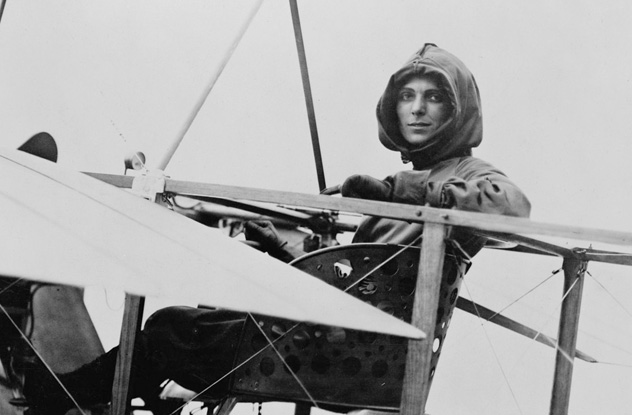
Although her name is nowadays remembered by a small group of people, Harriet Quimby was one of the greatest early female aviators. In 1911, Quimby became the first woman in the country to get her pilot’s license with the Aero Club of America. When she wasn’t busy flying planes recreationally, Harriet Quimby enjoyed quite a successful career in Hollywood by writing screenplays that were turned into silent shorts.
Eventually, Quimby set her sights on more ambitious projects and was soon planning a flight across the English Channel, a first for a female pilot. She completed it on April 16, 1912 by taking off from Dover and landing 59 minutes later on a beach near Calais in France. She officially became the first female pilot to fly the Channel, but her feat drew little interest from the media. It’s not that it wasn’t newsworthy, but something really big just the day before completely captured the public’s attention.
On April 15, 1912, the Titanic sank during its maiden voyage. Quite understandably, all other events took a backseat in the press. And unfortunately for Harriet, she didn’t get to enjoy her legacy once the frenzy around the Titanic subsided, either. Just two and a half months later, Harriet Quimby died in an accident during an aviation contest in Boston.
9The 1994 NBA Finals
As the culmination of an entire season of basketball, the NBA finals don’t usually have a problem finding an audience. However, 1994 looked to be an iffy year. On one hand, many thought the year marked the end of the Jordan era since Michael Jordan decided to retire from basketball and try his hand at baseball, leaving the 1994 season without basketball’s most popular superstar. At the same time, though, the finals still featured two big market teams, the New York Knicks and the Houston Rockets, who both had their own stars, Patrick Ewing and Hakeem Olajuwon. Many hoped the clash between these two Hall of Famers would be enough to counterbalance the first NBA finals in four years without MJ.
In the end, the NBA’s worst fears came true as Game 5 held at Madison Square Garden on June 17, 1994 would go down in history as the era’s lowest-rated finals game. However, this wasn’t because the action was boring or because people wanted Jordan back, but rather because everyone in America was glued to their TVs watching the notorious white Bronco O.J. Simpson chase.
It was one of those “where were you?” moments, and every major broadcaster except NBC was showing the chase live. Knowing they were losing viewers, NBC affiliates pulled the game and also started broadcasting the chase while the NBA itself eventually went with a picture-in-picture route with the chase front and center.
8The Death Of Groucho Marx
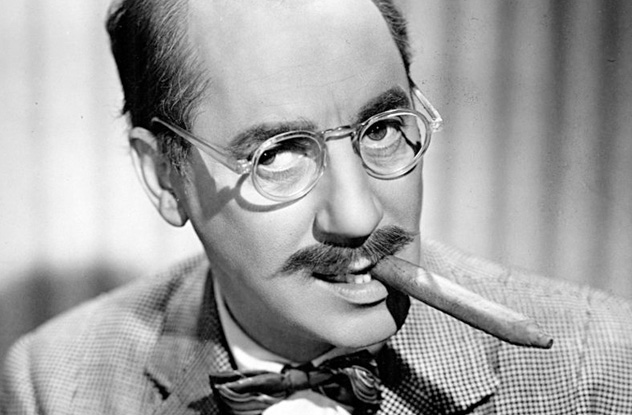
The most common instance of one event being outdone by another is when two famous people die. The more famous person will always get more attention from the media, so a celebrity’s passing can sometimes be almost completely overlooked. Such was the case with Groucho Marx, the renowned comedian from the Golden Age of Hollywood who starred in many popular comedies of the day alongside his brothers.
By the time Marx died on August 19, 1977, his career was nowhere near where it used to be. Even so, his legacy couldn’t be denied, particularly his distinct look. Younger audiences might not be familiar with his movies, but they can still walk into almost any costume shop in the world and get the trademark Groucho disguise consisting simply of glasses with a thick mustache and eyebrows (add a cigar for extra authenticity). But when Groucho died, the world didn’t react because it was still stunned from the death of Elvis just three days prior.
Nowhere was the lack of attention more obvious than in Time magazine. When he was alive, Groucho Marx appeared on the cover twice: once in 1932 with his brothers and again in 1951 on his own. Yet his obituary was only given a few lines and pushed toward the end of the magazine. This even prompted Woody Allen to write a letter to Time complaining.
7The Servant Girl Annihilator
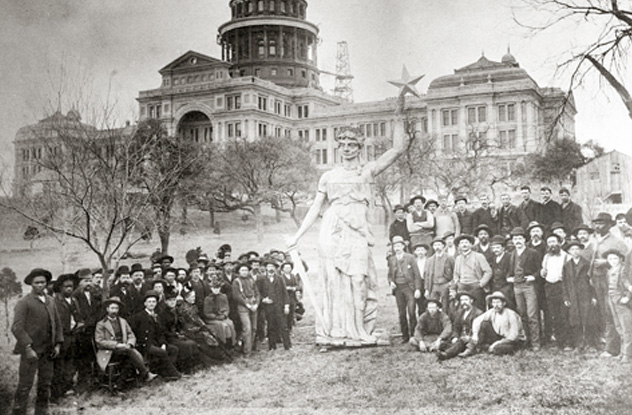
The 1888 Whitechapel murders, perpetrated by an unidentified man known as Jack the Ripper, are without a doubt one of the most studied chapters in criminal history. For the first time ever, a serial killer had captured the imagination of the public. Countless theories have been proposed regarding the man behind the murders, books have been written, and self-identified ripperologists built careers around this event. And yet, the spotlight could easily have gone to somebody else.
Just a few years before Saucy Jack was wreaking havoc on the streets of London, somebody was killing women in Austin, Texas. He became known as the Servant Girl Annihilator, and he shared many similarities with Jack. Like Jack, he targeted women, and he killed in a violent manner, often involving mutilation. Most importantly, he also remained unidentified. He even had more victims than Jack the Ripper (that we know of). And yet he is a criminal footnote, while Jack became the headliner. Maybe it’s because his nickname is not as catchy.
Early on during the spree, one of the suspects was a Malay cook who left America around the time the murders, stopped, and supposedly went to London. This made some people think that the cook was the Servant Girl Annihilator who simply continued his murderous spree in Whitechapel.
6The End Of The Hundred Years’ War
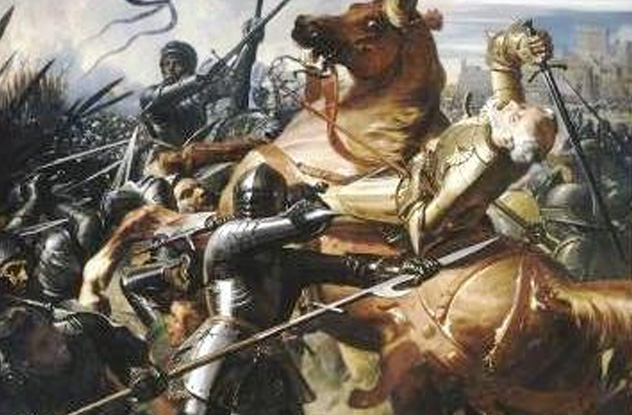
Despite its catchy moniker, the Hundred Years’ War isn’t aptly named. For starters, it didn’t last for 100 years—it lasted for 116 years from 1337–1453. Moreover, it wasn’t just one long conflict. Rather, historians usually group all the fights into three distinct wars separated by long truces. Only recently has the term “Hundred Years’ War” been used to encompass that whole period of conflicts between England and France.
The end of this conflict is considered to be the Battle of Castillon on July 17, 1453. It marked the French victory and England losing control over Gascony, its last territory on continental Europe. Technically, the war continued, but no further battles were fought, as England realized it was too weak to take on the French. This event also triggered the War of the Roses between the Houses of York and Lancaster for the throne of England.
Obviously, the war shaped history for centuries to come, particularly its outcome. And yet, when people look back at 1453, an even more significant event overshadows this one—the fall of Constantinople. Two months before the Battle of Castillon, Ottoman troops sacked the Byzantine capital of Constantinople, bringing an end to the 1,500-year-old Roman Empire. Soon after, the capital of the Ottoman Empire was moved here, and the migration of Greek and Roman intellectuals to Italy eventually brought on the Renaissance. Many historians consider this event to mark the end of the Middle Ages.
5The Doctor Who Pilot
https://www.youtube.com/watch?v=yqjXdSrh5WQ
The British sci-fi show Doctor Who is an integral part of British pop culture and has garnered tons of critical acclaim and a dedicated cult following (who prefer the term “Whovians”). It’s been on since the 1960s, other than a long pause during the ’90s, and contains over 900 episodes (of which almost 100 are considered missing). But the show got off to a very rocky start.
The pilot episode of the show, split into four parts, was called “An Unearthly Child.” It featured William Hartnell as the first incarnation of the Doctor and Carole Ann Ford as his granddaughter and companion Susan Foreman. It was originally broadcast on November 23, 1963 but was met with a relatively low rating of 4.4 million. Of course, this could have had something to do with the fact that President John F. Kennedy had been assassinated the day before. The assassination plus the investigation that followed received extensive media coverage.
As if that wasn’t enough, many parts of England suffered a power failure during the broadcast of the pilot which further decreased the show’s viewership. Eventually, the first part was repeated the following week prior to airing the second part, and this time the ratings were much better, turning Doctor Who into the phenomenon still popular today.
4The Texas City Disaster
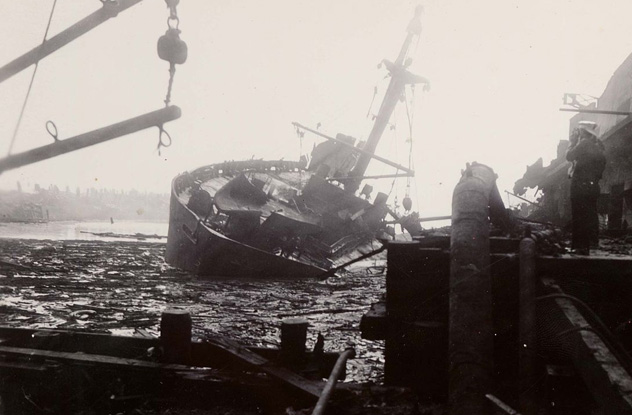
On April 16, 1947, Texas City suffered one of the deadliest industrial accidents in US history after a docked vessel carrying over 2,300 tons of ammonium nitrate exploded, causing killing 581 and injuring thousands. Besides the huge loss of life, the disaster had long-running consequences, eventually leading to the first ever class action lawsuit against the US government on behalf of almost 8,500 people.
A relief effort was organized, and the media were on hand to cover this national tragedy, but most Americans were focused elsewhere because the most anticipated and hotly debated debut in American sports history just took place the day before. On April 15, 1947, Jackie Robinson became the first black man to play Major League Baseball since racial segregation had begun in the sport. To this day, April 15th is celebrated by every major league team as Jackie Robinson Day, so it’s a pretty safe bet that the event carried a lot of significance. All over the country, people were putting in their two cents on the matter. They might have been for it or against it, but everyone certainly had an opinion, and this made the subject media gold.
The Robinson story didn’t die down anytime soon. The media covered the hardships and rejection Robinson had to endure from other teams and even his own teammates who didn’t want to play alongside him. Brooklyn Dodgers manager Leo Durocher stepped in and said that Robinson was playing whether he was “yellow or black, or if he has stripes like a
3Queen Isabella Causeway Disasters
The Queen Isabella Causeway is a seemingly innocuous 3-kilometer (2 mi) stretch of road connecting the island of South Padre to the Texas mainland. During its brief 40-year existence, it was the scene for two unfortunate tragedies that went largely unnoticed by the media.
First, on August 13, 1996, a small Cessna airplane crashed into the bridge, killing the pilot and his passenger. As tragic as that might be, more important stuff was happening in the world. On that same day, the Galileo space probe indicated the then-shocking idea that Jupiter’s moon Europa might have liquid water. On the political front, two days later, Bob Dole was announced as a nominee for the presidency. And on an international front, the world finally saw a happy ending to the 1995 Airstan incident when a crew of Russian pilots made a successful escape after being held captive by the Taliban for over a year.
A more serious event took place in 2001 when a barge crashed into the causeway, causing entire sections of the bridge to collapse. Eight people died because they were unable to escape their cars, which fell into the water. However, this tragedy occurred on September 15, 2001, and from the date alone, it becomes pretty obvious what world-changing event took place just four days prior.
2The Return Of The Mad Gasser
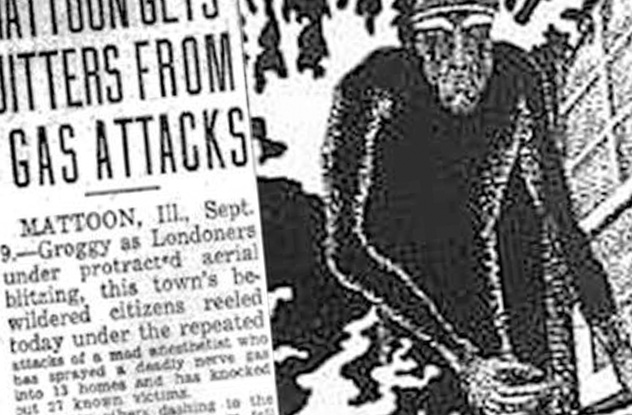
The return of the Mad Gasser might sound like a B-grade horror movie, but it was a real problem for the citizens of Mattoon, Illinois. The Mad Gasser was responsible for a string of gas attacks in Botecourt County, Virginia during the 1930s. He was never caught and disappeared for 10 years before making his return in the city of Mattoon. If all of the attacks attributed to him were genuine, then the Mad Gasser was responsible for over 50 attacks, all of them harmful but non-fatal. However, many people think that the Mad Gasser never existed.
Several theories have been proposed regarding his identity, and many claim that it was never the work of one person. Mass hysteria is often proposed as the main culprit since people blamed a gas attack every time they smelled something funny. Only one real person was put forward as a suspect, a mentally unstable yet scientifically gifted man named Farley Llewellyen.
Regardless of who or what was actually responsible, the idea that an American city was under attack by a madman could have been a story that captivated the entire nation . . . if it didn’t take place during World War II. As it happened, the Mad Gasser’s return happened just a few days after the liberation of Paris after four years of Nazi control. Thousands of French people and Allied troops flooded the streets in celebration, and the media was busy covering what might have been the biggest morale boost for the Allies during the entire war.
1John Fairfax Rowing Across An Ocean
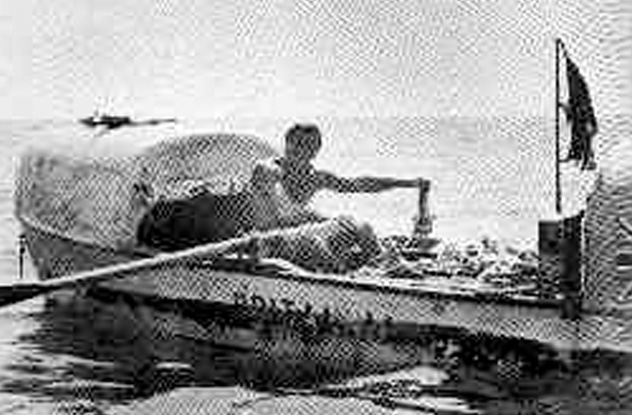
John Fairfax lived an exciting life filled with danger and adventure. At 13, he temporarily left home and went to live alone in the jungle. He survived by hunting wild animals and selling their pelts for supplies. At age 20, a troubled Fairfax wanted to kill himself, and he made the odd choice of using a jaguar attack as his preferred suicide method. He waited patiently in the jungle for a jaguar to attack him but also kept a revolver close in case he changed his mind. And he did. Rght when a jaguar pounced, Fairfax shot it. He then sold its pelt. Later, when he was finally looking for a serious job, he found one as an apprentice . . . to a pirate. Therefore, his next years were spent mostly as a smuggler, although he did actually learn navigational skills as a result of his apprenticeship.
None of those is the main reason why Fairfax is remembered today, though. On January 20, 1969, Fairfax set off on his own from the Canary Islands in a boat. On July 19, he arrived in Florida, becoming the first person to row across an ocean solo.
Fairfax became the talk of the town, but only for a day. His bad timing didn’t allow him to bask in the adulation of the media because the very next day, something truly historic was happening. On July 20, 1969, all of humanity was watching as the Apollo 11 astronauts became the first humans to walk on the Moon.
Radu is a history/science buff who tweets on occasion.








